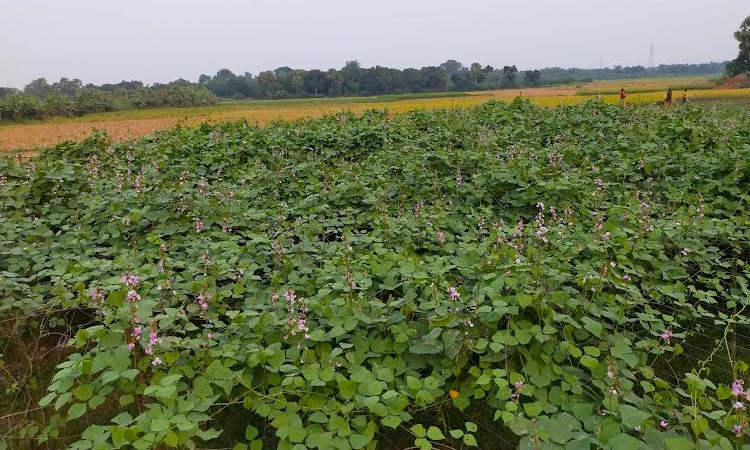News Flash

By Md Aynal Haque
RAJSHAHI, Oct 8, 2025 (BSS) - Farming of summer beans has been gaining popularity in the Rajshahi region, including the Barind Tract, as it offers significant economic benefits to farmers, making them financially solvent.
Farmers are successfully cultivating high-yielding varieties of beans like Ghritakanchan and Rupbhan during the summer season by adopting modern technologies and with support from the Department of Agricultural Extension(DAE).
This practice provides a good income, especially for marginal farmers and the poor, and has become an effective way to bring fortune to many families in the region.
Many of the grassroots farmers and other enthusiastic people are cultivating the cash crop commercially due to lucrative market prices, particularly in the advent of the winter season.
Generally, the bean is a winter vegetable, but it is being cultivated during the summer season commercially at present, making both the growers and consumers happy. Currently, beans have been appearing in the local markets regularly.
"I've been purchasing beans from local kitchen markets and vendors for the last month," said Rawnak Afroz Dipty, a housewife of the Haragram area in the city.
Currently, the bean is being sold at around Taka 160 to 180 per kilogram in retail markets during the last couple of days.
"Bean is one of my favorite vegetables and we are getting it during summer side by side with winter," said Rawnak Dipty.
Ahad Ali, a farmer of Kantapasha village, said that he cultivated beans on six bighas of land this year.
"After obtaining my master's degree, I joined a school. At the same time, I started bean cultivation as it is very profitable," he said.
Babul Akter, 56, another farmer of Purakhali village, has cultivated the crop on 12 katha of land this year after getting success on four katha last year.
In the previous times, people had to cultivate the vegetable on homesteads and rooftops only in winter seasons but at present the cash crop is being cultivated in both summer and winter seasons on farming fields commercially to meet the gradually mounting demands.
Piarul Islam, a farmer of Dharampur village under Godagari upazila, has become successful in bean farming which has made him solvent.
"I had earned a profit of around Taka 60,000 after cultivating the vegetable on ten katha of land last year," he said with a smiling face.
He has cultivated the vegetable on one bigha of land by setting up stages made of bamboo sticks this season and has been selling the crop for the last couple of weeks at a lucrative price.
Islam said farmers spend around Taka 35,000 to 40,000 for cultivating beans on one bigha of land and get a yield of 150 to 200 maunds per bigha on average.
Sub-Assistant Agriculture Officer Atanu Sarker told BSS that many people are seen cultivating the vegetable and agri officials are extending technological and inspirational support to grassroots farmers for bean production.
Deputy Director of the Department of Agricultural Extension Umme Salma said the farmers use three varieties of seed- Ghrita Kanchan, Rupbhan and Auto. They are getting extra benefits from the farming as the varieties are high-yielding.
Large numbers of farmers are now engaged in bean cultivation commercially in recent times considering its economic prospects.
Former Director of the Department of Agriculture Extension, Sirajul Islam, attributed the commercial summer bean cultivation is providing solvency and a steady income for farmers, making it a profitable venture.
Farmers use high-yielding varieties such as Ghritakanchan and Rupbhan to maximize production and profit.
The use of modern technologies has improved the efficiency and productivity of bean cultivation in the region as the DAE is providing technological and inspirational support to farmers to boost production.
The practice is becoming more widespread, with many farmers engaged in commercial cultivation, including those on small plots and homesteads.
Dealers directly purchase the harvested beans from the farming fields, creating a steady market for the farmers.
Apart from economic benefits, homestead bean farming also helps meet the nutritional demands of the villagers.
The benefits extend to the vast Barind tract, encompassing areas within Rajshahi, Chapainawabganj, and Naogaon districts.